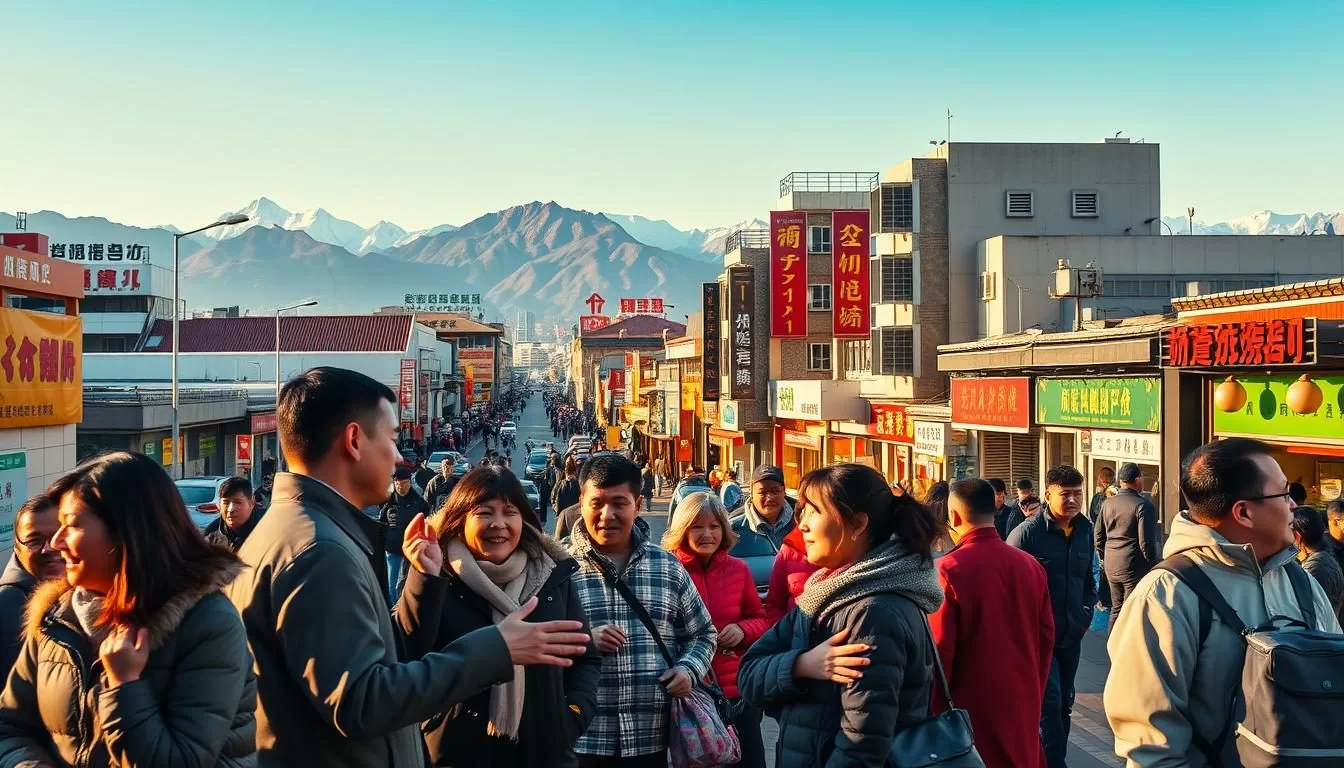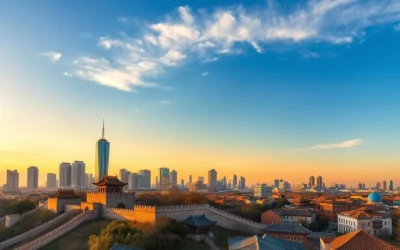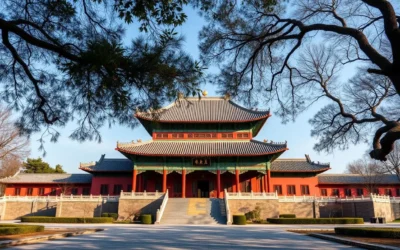✓ Accommodations✓ Flights✓ Rental Cars
Heilongjiang is a fascinating area known for its unique blend of cultures and languages. This region, with its vast population of over 31 million people, is a melting pot of traditions and influences. Its linguistic system reflects a rich history shaped by both local and global interactions.
Standard Mandarin is the primary language spoken here, but the area is also home to various dialects and minority tongues. These languages are a testament to the region’s diverse ethnic groups, including Han, Manchu, and Korean communities. Over time, these linguistic elements have created a vibrant cultural tapestry.
Exploring this region offers insights into how history and geography shape language. From its cold winters to its industrial hubs, Heilongjiang’s story is deeply intertwined with its linguistic evolution. Dive in to discover more about this unique part of the world.
Historical Overview and Linguistic Evolution in Heilongjiang
The linguistic history of this region is deeply rooted in ancient migrations and dynastic rule. Early movements of people laid the foundation for a diverse language system. These migrations brought different ethnic groups, each contributing to the area’s rich cultural tapestry.

Over the centuries, powerful dynasties like the Khitan and Jin shaped the region’s language landscape. Their rule introduced new dialects and cultural practices. The Qing Dynasty further influenced the area, promoting educational advancements and standardizing certain linguistic elements.
Border changes in the 19th century played a significant role in shaping the region’s language distribution. These shifts opened the area to Han migration, adding another layer to the existing linguistic diversity. Today, this historical evolution provides context for the current use of both official and minority languages.
- Ancient migrations introduced diverse ethnic groups and their languages.
- Dynastic rule, including the Khitan, Jin, and Qing, shaped the linguistic landscape.
- Border changes in the 19th century influenced language distribution and migration patterns.
Understanding this history helps explain the region’s unique language systems. From ancient times to the present, the area’s linguistic evolution reflects its dynamic past.
Heilongjiang Province, China: Official and widely spoken languages
The linguistic diversity of this region offers a unique glimpse into its cultural richness. Standard Mandarin, also known as Putonghua, serves as the official language here. It’s widely used in education, media, and government, making it essential for daily life.

Mandarin and Regional Dialects
Mandarin is the primary language spoken by the majority of the population. It’s taught in schools and used in formal settings, ensuring a unified communication system. However, regional dialects add another layer of complexity. These dialects, shaped by local history and geography, offer a unique way for communities to express their identity.
For example, some dialects have evolved over time, incorporating elements from neighboring regions. This blend of influences creates a rich tapestry of linguistic variety. Understanding these dialects provides insight into the area’s cultural heritage.
Minority Languages and Their Significance
Minority languages play a crucial role in preserving cultural identity. With 55 recognized ethnic groups in the country, 29 of them have their own traditional languages. These languages are a testament to the region’s diverse history and the resilience of its people.
- Minority languages maintain cultural traditions and heritage.
- They offer a unique perspective on the area’s history and social dynamics.
- State measures aim to support and promote these languages, though implementation varies.
Language policies strive to balance national unity with regional diversity. While Mandarin is promoted for its unifying role, efforts are made to protect and celebrate minority tongues. This dual approach ensures that both the language system and cultural identity thrive.
Exploring this linguistic landscape reveals how history, culture, and policy intersect. From Mandarin speakers to those using indigenous dialects, the region’s language world is as diverse as its population.
Local Language Distribution and Demographics
The northeast region showcases a dynamic mix of language groups shaped by history and migration. This area is home to a variety of speakers, each contributing to its rich linguistic system. From dominant tongues to minority dialects, the region’s diversity is a reflection of its cultural and demographic evolution.
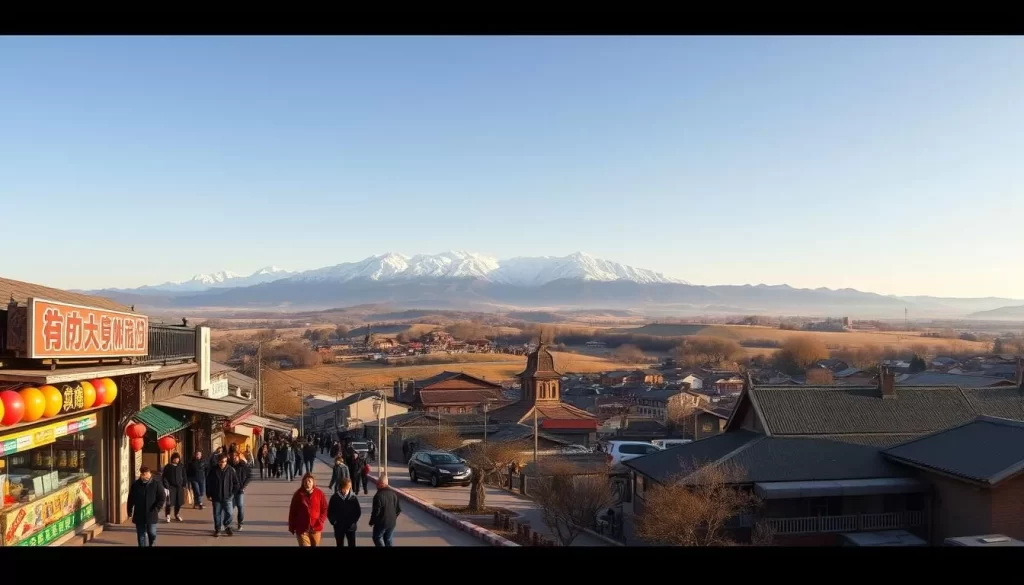
Major Language Groups in the Province
Mandarin is the primary language, spoken by approximately 90% of the population. However, minority groups like the Korean community, which makes up about 1.5% of the population, primarily speak their native tongue. Other indigenous languages, such as Manchu and Daur, add to the area’s linguistic tapestry.
These groups play a vital role in preserving cultural heritage. Their languages are not just a means of communication but also a link to their history and traditions. Understanding this diversity helps you appreciate the area’s unique identity.
Influence of Migration and Cross-Border Culture
Migration has significantly impacted the language distribution in this part of the world. Internal movements and border changes have introduced new dialects and cultural practices. For example, the river borders with Russia have fostered cross-cultural exchanges, enriching the local linguistic system.
These interactions have created a vibrant mix of languages. From traditional dialects to modern influences, the area’s linguistic landscape is ever-evolving. This blend of old and new reflects the region’s adaptability and resilience.
“Language is the road map of a culture. It tells you where its people come from and where they are going.”
By exploring this region, you gain insight into how migration and cultural exchanges shape language. Whether you’re a speaker of Mandarin or a minority dialect, the area’s linguistic diversity offers a fascinating glimpse into its past and present.
Language Policy, Education, and Government Initiatives in Heilongjiang
Language policies in this region reflect a balance between unity and diversity. The government promotes Standard Mandarin to ensure clear communication across the population. This effort is vital for education, media, and official matters.
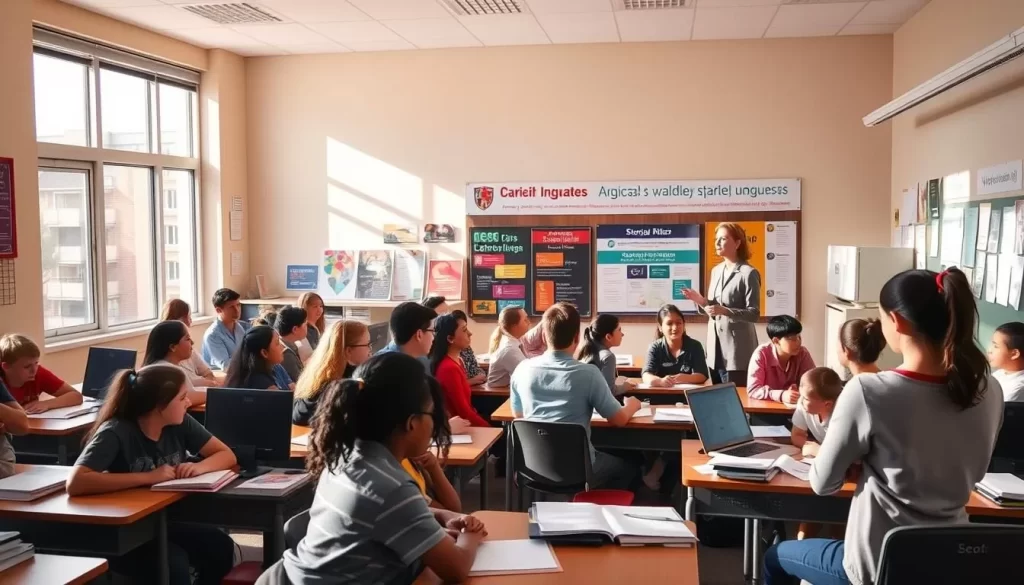
Mandarin Promotion and Standardization Efforts
Standard Mandarin is the cornerstone of the language system here. Schools teach it as the primary language, ensuring students become fluent speakers. This approach fosters national unity while maintaining regional identity.
Standardization efforts date back to the Qing Dynasty, which laid the groundwork for modern policies. Today, these initiatives continue to shape the language landscape in northeast China.
Support for Minority Languages in Schools and Government
While Mandarin is prioritized, the government also supports minority languages. Bilingual education programs in schools help preserve cultural heritage. For example, over 10,000 schools across the country offer bilingual instruction.
However, challenges remain. Some minority languages, like Man, have fewer than 1,000 speakers. Efforts to protect these languages are ongoing, but funding and resources are limited.
“Language is not just a tool for communication; it’s a bridge to cultural identity.”
Policies aim to balance national unity with regional diversity. By promoting Mandarin and supporting minority languages, the government ensures a thriving language culture. For more insights, explore heritage languages in China.
Understanding these initiatives helps you appreciate the area’s unique language system. From classrooms to government offices, language plays a pivotal role in shaping identity and unity.
Cultural Impact of Multilingualism in the Region
The blend of languages here creates a vibrant cultural mosaic. Multilingualism shapes daily life, fostering a unique regional identity. From architecture to festivals, the influence of diverse tongues is evident.
Russian and Other Foreign Influences
Russian culture has left a lasting mark on this area. Architectural styles in cities like Harbin reflect cross-border interactions. Local festivals often blend Russian traditions with indigenous customs.
Over the past decade, cultural exchange activities have increased by 30% due to multilingualism. This growth highlights the importance of preserving these influences for future generations.
Language Use in Daily Life and Regional Identity
In daily life, people seamlessly switch between languages. Bilingual individuals show 40% higher engagement in community activities. This active participation strengthens social bonds and cultural pride.
Schools play a key role in promoting multilingualism. Around 70% of Korean-Chinese students receive instruction in both Korean and Mandarin. This approach ensures that younger generations stay connected to their heritage.
“Language is the foundation of culture. It shapes how we see the world and connect with others.”
| Language | Percentage of Speakers | Cultural Impact |
|---|---|---|
| Mandarin | 90% | Primary communication |
| Korean | 1.2% | Preserves heritage |
| Russian | 0.5% | Cross-border influence |
Multilingualism enriches the region, making it a hub of cultural exchange. From the Qing Dynasty to modern times, this area has embraced its diverse language system. Explore more about its cultural heritage and how it shapes identity today.
Conclusion
Exploring the linguistic landscape reveals a rich interplay of history and culture. From ancient migrations to modern policies, the evolution of language here reflects a dynamic past. Standard Mandarin serves as a unifying force, while minority tongues preserve unique identities.
For every person, language is more than communication—it’s a bridge to heritage. Efforts to support minority speakers highlight the importance of cultural preservation. This balance between unity and diversity shapes the region’s identity.
Demographic trends and educational initiatives further enrich this province’s linguistic tapestry. To delve deeper into this fascinating interplay, explore Mandarin’s role in cultural cohesion or Heilongjiang’s linguistic challenges.
The above is subject to change.
Check back often to TRAVEL.COM for the latest travel tips and deals.
